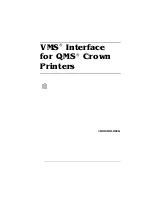
27
CHAPTER 3
Write Scripts with ActionScript
The ActionScript language that is part of Macromedia Flash MX 2004 and Macromedia Flash
MX Professional 2004 offers designers and developers a variety of benefits. With ActionScript
you can control document playback in response to events such as elapsed time and loading data;
add interactivity to a document in response to user actions, such as a button click; use built-in
objects, such as a button object, with built-in associated methods, properties, and events; create
custom classes and objects; and create more compact and efficient applications than you could
create using user interface tools, all with code that you can reuse.
ActionScript is an object-oriented scripting language that offers control over how your
Flash content plays. In subsequent lessons, you’ll see how ActionScript has evolved into
ActionScript 2.0 to comprise a core set of language elements that make it easier to develop
object-oriented programs.
You’ll now use ActionScript to accomplish the following tasks:
•
Name instances following recommended practices
•
Initialize a document
•
Apply ActionScript syntax
•
Locate ActionScript reference documentation
•
Add comments to ActionScript
•
Write a function
•
Copy and modify a function
•
Check syntax and test your application
Summary of Contents for FLASH MX 2004-LEARNING FLASH
Page 1: ...Learning Flash...
Page 8: ...8 Contents...
Page 34: ...34 Chapter 3 Write Scripts with ActionScript...
Page 54: ...54 Chapter 6 Create a User Interface with Layout Tools...
Page 62: ...62 Chapter 7 Draw in Flash...
Page 68: ...68 Chapter 8 Create Symbols and Instances...
Page 76: ...76 Chapter 9 Add Animation and Navigation to Buttons...
Page 104: ...104 Chapter 13 Add Interactivity with ActionScript...
Page 112: ...112 Chapter 14 Create a Form with Conditional Logic and Send Data...
Page 122: ...122 Chapter 15 Work with Objects and Classes Using ActionScript 2 0...
















































